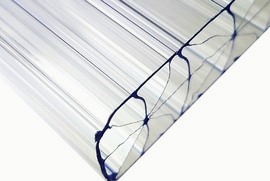Polycarbonate awnings
- Aug 27, 2021
- 3 min read
Polycarbonate is a lightweight yet reliable material that is ideal for construction awnings and canopies for your home. Before starting construction, it is necessary to identify all the pros and cons of the material, choose the right polycarbonate and make accurate calculations. To understand all these nuances, follow the tips that we have prepared for you in this article.
Advantages and disadvantages of a polycarbonate awning
Polycarbonate is used not only for the construction of awnings near the entrances of apartment buildings or private houses. It is also great for covering open gazebos, verandas or agricultural greenhouses. The great popularity and wide scope of application is due to a number of advantages of polycarbonate, including:

Sheets of this construction material are light in weight, so work with polycarbonate. And a very complicated frame is not required to install the structure.
Sheets are protected from the negative effects of ultraviolet rays.
The material is resistant to negative environmental influences. Namely, polycarbonate is moisture-resistant, shock-resistant. But, importantly, it is quite flexible, which allows us to fulfill orders of various levels of complexity and original architectural configuration.
In addition, polycarbonate is available in a variety of colors, there is a wide selection of shades, and the price will pleasantly surprise you. However, it is worth considering the disadvantages of the material.
Polycarbonate does not withstand chemically aggressive substances (in particular, acids and solvents), is not resistant to scratches. Also, the material is not heat-resistant (deforms, afraid of high temperatures). On the front side, polycarbonate is often covered with a special protective layer so that later, during operation, it lets in less light.
What shape can a polycarbonate awning be: options
Since polycarbonate is a rather elastic material, any designs of various shapes, configurations and sizes come out of it. The most simplified one is a lean-to awning; everyone will be able to install it.

Gable options are more complex designs, but they look more original. The creative decoration of the summer cottage area is an arch-shaped awning. Such structures not only look presentable, but also from the point of view of practicality, they are very thoughtfully made – water flows quickly from the walls, and snow does not accumulate in the winter months, which guarantees a long service life of the awning. The owner of the house will not have to worry and waste time cleaning the awning.
The most difficult options are dome structures, for the construction of which it is necessary to carry out the most accurate calculations. In addition, you are unlikely to succeed in assembling such an awning yourself. Therefore, in order not to risk it, it is necessary to seek help from experienced specialized specialists.
Does the thickness of the material for the awning matter?

In order for the awning to withstand gusts of wind and load during operation, it is necessary to choose the correct thickness of polycarbonate. All sheets on the construction market are available in thickness from 4 to 32 mm. Sheet thickness is not the only criterion for structural reliability. The strength of the frame is also important. If your budget is too tight, you can buy thin, inexpensive polycarbonate. However, if you want to build a high-quality awning that will not collapse under the load of snow in a couple of years, you should not save. It is better to purchase high-quality thick sheets – and thus provide yourself with a strong and reliable awning that will serve for many years.
How are calculations done?
The next stage in the construction of a polycarbonate awning is to determine the required amount of materials. First you need a detailed drawing, which is carried out taking into account certain rules. First, it is worth considering when erecting an awning that the polycarbonate sheathing should protrude 11-20 inches beyond the frame. This rule is developed for all awnings: for the porch, and for the carport, and for swimming pools.

















Comments